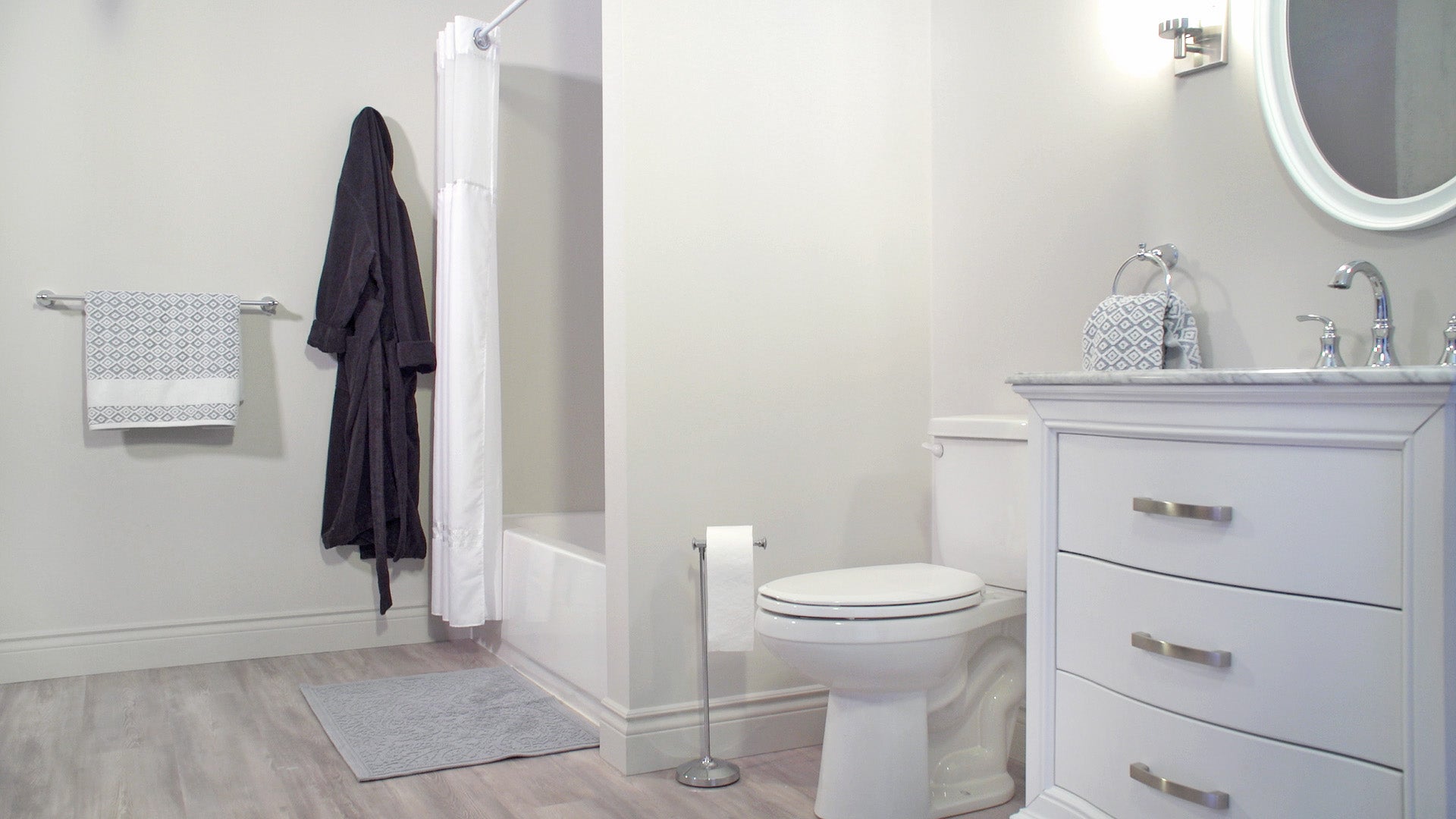Aging in place means creating a home where seniors can live safely and comfortably as they grow older, without needing to move to assisted living or a care facility. For many elderly people, staying in a familiar space is about more than convenience. It’s really about independence, dignity and peace of mind.
Many of the improvements that you may consider can also prove to be useful in ensuring general safety within your home at any age. With foresight in mind, especially when renovating your home, these changes can be done in a tasteful manner that will help provide safety for young children and adults alike. This is key when considering how to remain in your home as you age.
Designing a home for aging in place doesn’t have to be overwhelming. Even small changes can make a big difference in safety and daily life. Thoughtful home modifications for elderly residents help reduce the risk of accidents, make every day tasks easier and let seniors continue living in a space that feels like home. When doing any renovation, consider the impact it may have on you as you age. Esthetics are important, however, always consider functionality and ease of use going forward as you age.
Planning Your Aging-in-Place Home
Creating a home for aging in place starts with a careful look at the spaces you already have. Every hallway, doorway and room should be evaluated to spot potential hazards that could make moving around harder or less safe for elderly people. Small obstacles, like loose rugs, narrow walkways or low lighting, can become serious risks over time.
Mobility and accessibility are key. Think about how easy it is to get from room to room, reach cabinets or shelves, and use everyday appliances. Even simple adjustments, like widening doorways, removing trip hazards or adding better lighting, can make daily life much smoother and safer.
It can also be helpful to bring in a professional for a home safety assessment. Experts who specialize in aging in place can spot risks that aren’t obvious and recommend modifications that fit both your home and your lifestyle. Planning ahead like this makes it possible to stay independent longer and feel confident moving safely throughout the house.
Key Home Modifications for Safety and Comfort
Here are a few spots you need to take a look at as you plan aging in place at home.
-
Entryways and Hallways can be tricky for mobility. Adding ramps, widening doorways and choosing non-slip flooring can help reduce the risk of falls. Clear pathways and good lighting also make moving from room to room safer.
-
Living Areas should feel open and easy to navigate. Rearranging furniture to allow smooth movement, removing trip hazards like loose rugs and adding layered lighting can help seniors move safely and comfortably.
-
Bedrooms benefit from simple adjustments. Clear walking paths, adjustable beds and night lights make it easier to get around at any hour.
-
Kitchens are often busy spaces, so accessibility matters. Pull-out shelves, lever-style faucets and countertops at a comfortable height make cooking and cleaning easier for elderly people.
-
Bathrooms are one of the most important areas for safety. Installing grab bars, non-slip mats and walk-in showers or tubs can prevent accidents and make bathing more manageable. These bathroom adaptations for the elderly are key to keeping the home safe and comfortable.
Thoughtful aging-in-place home modifications like these not only protect seniors from accidents but also make daily routines easier, giving everyone in the household peace of mind.
Products for Seniors Living at Home
There are many products designed to make life easier and safer for seniors living at home. Simple tools can help maintain independence and reduce the risk of accidents around the house.
In the bathroom, grab bars, shower chairs and non-slip mats are essential for safety. For those looking to make bathing even safer, Quick Tub provides affordable and simple walk-in tub conversion kits that makes getting in and out easier while offering a comfortable bathing experience.
In the kitchen and living spaces, adaptive utensils, lever-style faucets and pull-out shelves can make daily tasks more manageable. Motion-sensor lights, smart home devices and easy-to-reach storage also improve safety and convenience.
Even small products, when chosen thoughtfully, can have a big impact on comfort and peace of mind. Using the right tools along with home modifications helps create a living space where seniors can move around confidently and comfortably every day.
Home Renovations for Seniors
Sometimes, small changes aren’t enough, and larger home renovations become necessary to support aging in place. These updates focus on long-term safety, comfort and accessibility, making daily life easier for elderly residents.
Bathrooms are often the first place to consider. The nice thing about bathroom modification is that Quick Tub (which we mentioned above) can be used instead of a big remodel on your tub or shower. So, that can save you time and money right away. Another thing to look at if you need to remodel your bathroom is higher toilets, which can make using the restroom more comfortable and safe. Wider doorways, open floor plans and stair lifts improve mobility throughout the home, helping seniors move freely without obstacles.
Kitchens and living spaces can also benefit from thoughtful design. Lowered countertops, pull-out drawers and accessible appliances reduce strain and make daily tasks more manageable. Adding bright, layered lighting and non-slip flooring throughout the house helps prevent accidents while improving visibility.
Even though some of these renovations take more time and planning, they allow seniors to stay in a home that feels familiar while providing the support needed to maintain independence. Home modifications for elderly residents are an investment in safety, comfort and peace of mind for everyone in the household.
Planning & Budgeting for Aging in Place
Creating a home that supports aging in place works best when changes are planned thoughtfully and fit within a budget. Start by identifying which areas of the home pose the biggest safety risks or daily challenges. Prioritizing these spaces helps focus resources where they will make the most difference.
Small modifications, like adding grab bars, non-slip mats or improved lighting, are usually the most cost-effective. Larger projects, such as walk-in tubs, stair lifts or remodeling bathrooms for accessibility, may require more investment, but they provide long-term safety and comfort.
Working with contractors or specialists who understand home modifications for aging in place can help keep costs realistic and ensure changes are done correctly. Planning ahead also allows time to compare products and materials, so each update adds both safety and value to the home.
Taking a more strategic approach makes it possible to create a much safer, more comfortable living environment for seniors without overwhelming the household or budget. Thoughtful planning turns a house into a home that can support independence for years to come.
FAQs
What is the best home design for aging in place?
A home designed for aging in place focuses on safety, accessibility and comfort. Open floor plans, wider doorways and good lighting throughout the house help seniors move around safely. Bathrooms with walk-in showers, grab bars and non-slip flooring are essential, and kitchens with easy-to-reach storage and lever-style faucets make daily tasks easier.
How to adapt a home for aging in place?
Start by looking at areas that may pose challenges, such as stairs, narrow hallways or slippery surfaces. Add safety features like ramps, handrails, non-slip flooring and night lights. Adjust the height of countertops and storage where needed, and consider products for seniors living at home, such as shower chairs or walk-in tubs, to make daily routines safer and more comfortable.
How to make your home safe for aging in place?
Focus on reducing hazards in every room. Remove trip hazards, improve lighting, install grab bars in bathrooms and keep frequently used items within easy reach. Simple home safety modifications for seniors can prevent falls and make everyday tasks easier, giving peace of mind for both residents and family members.
How much do aging-in-place home modifications cost?
Costs vary depending on the size of the project. Small updates, like grab bars, non-slip mats and better lighting, are generally inexpensive. Larger renovations, such as walk-in tubs, bathroom remodels or stair lifts, require more investment but provide long-term safety and comfort. Planning ahead and prioritizing modifications can help manage expenses while creating a home suited for aging in place. Keep aging-in-place in mind when doing renovations at an early age, you can already incorporate many of these needed improvements now.



Share:
The Role of Handheld Showerheads in Safe and Comfortable Bathing
Aging in Place: How to Future‑Proof Your Bathroom